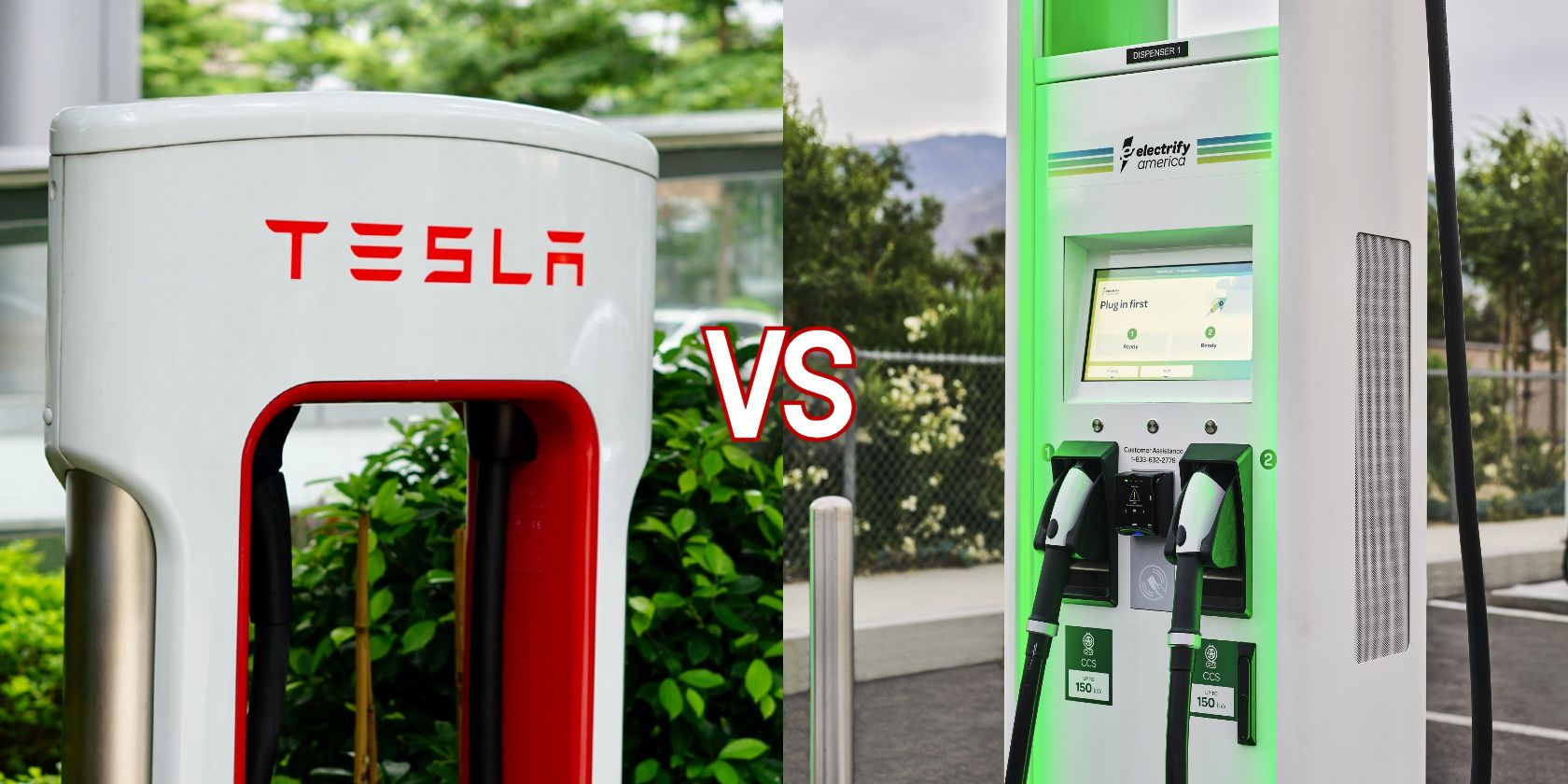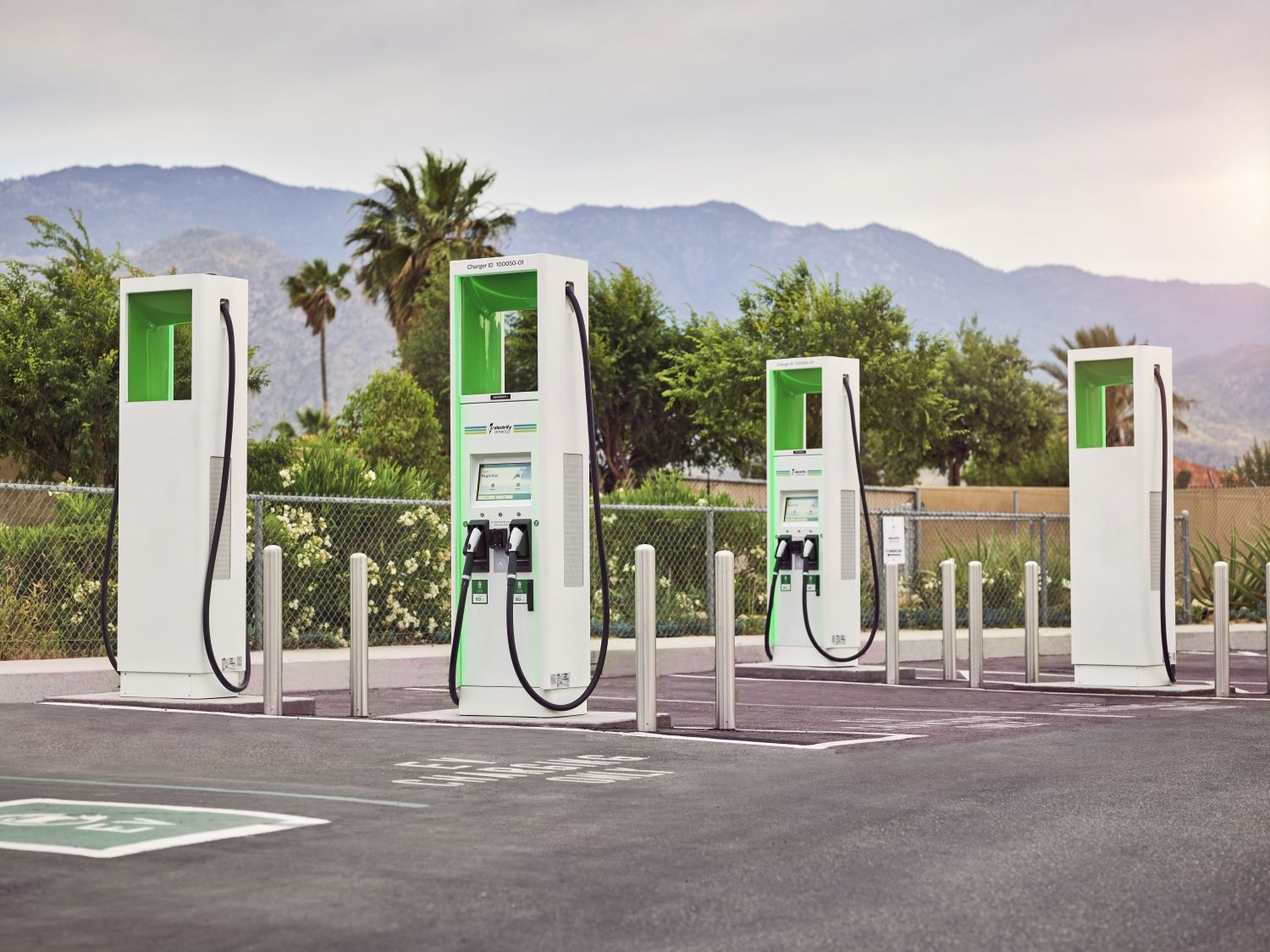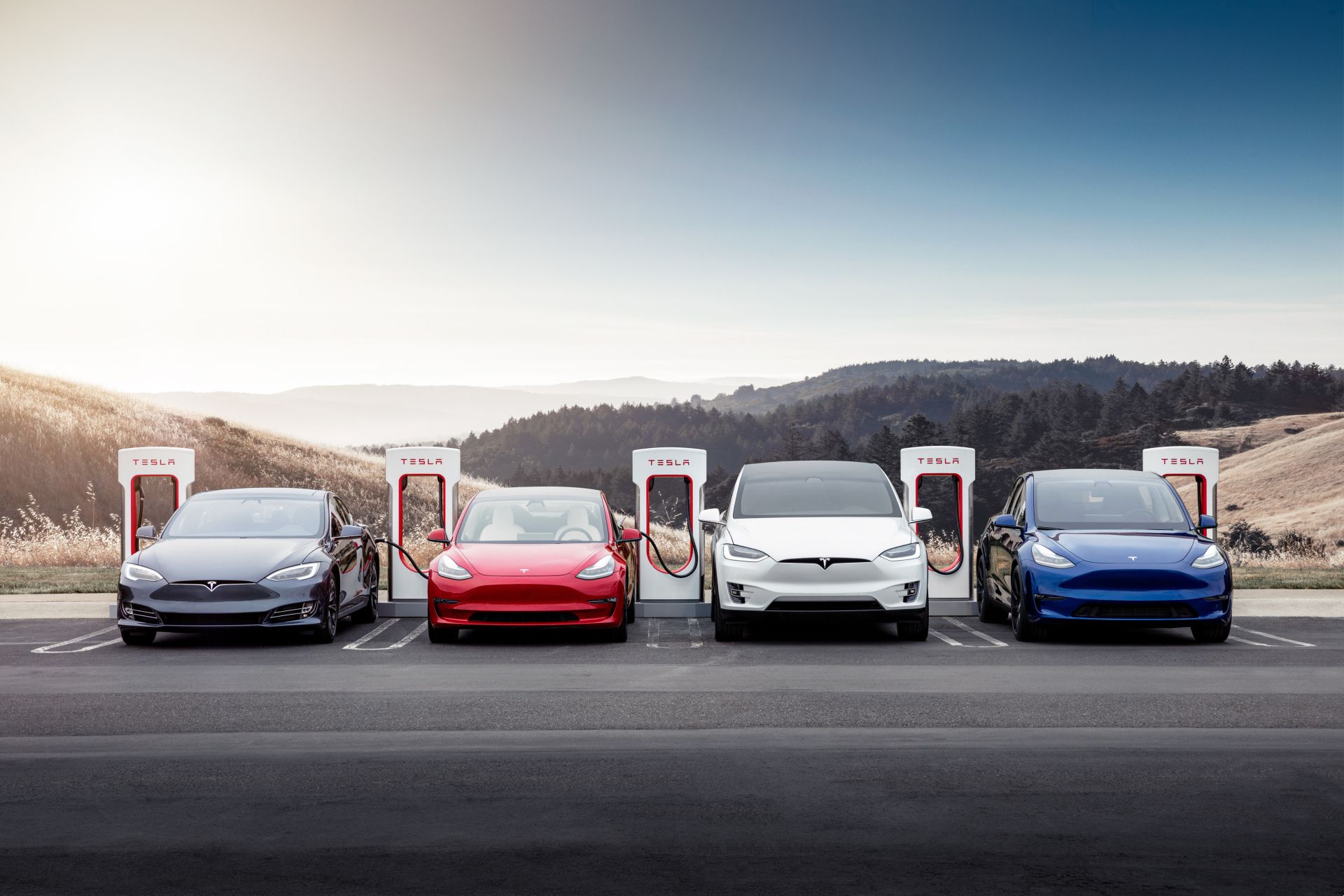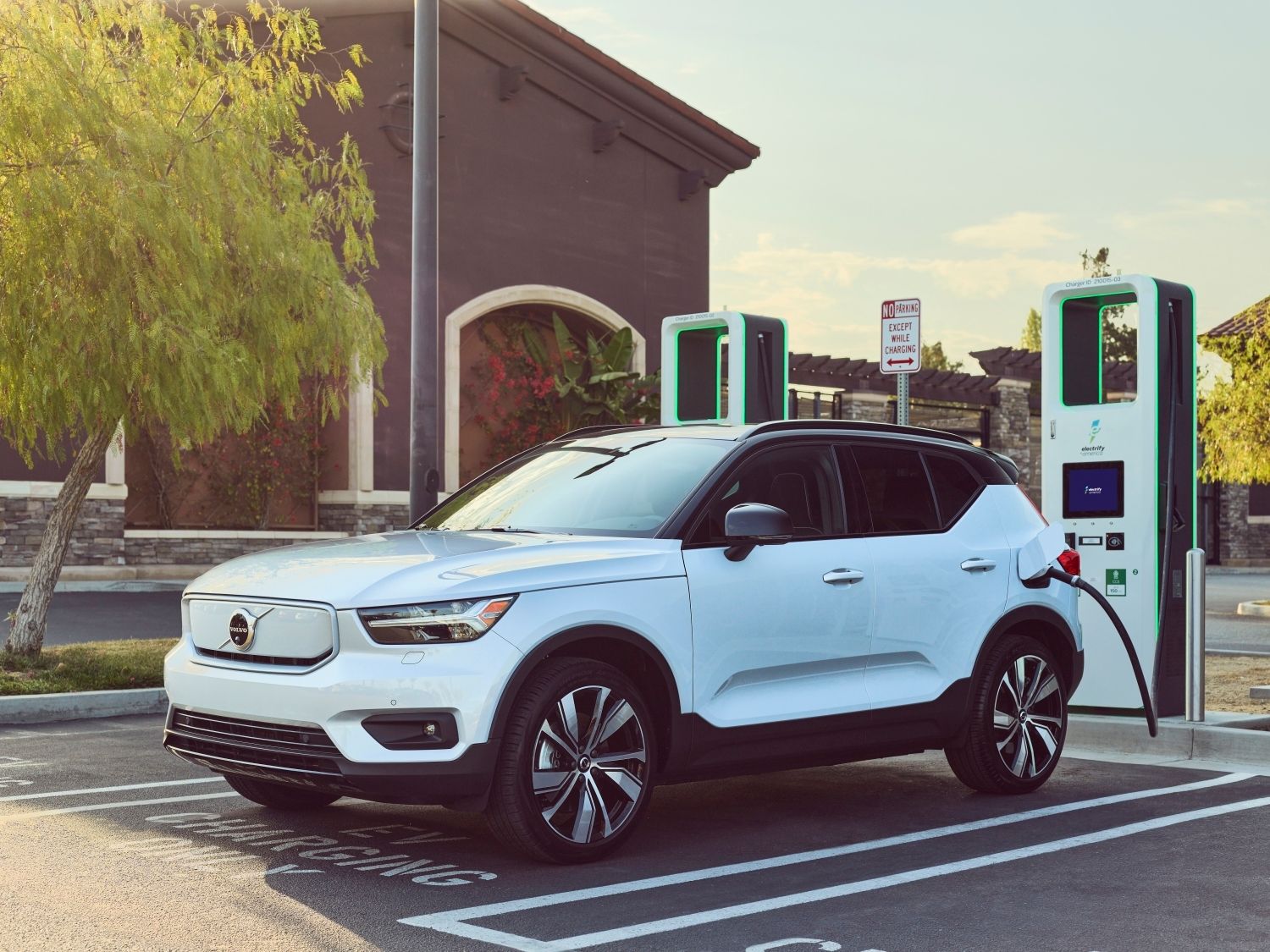When we think about switching to an electric car, our minds immediately look for all its positives: the performance for the money will be great, the design will be futuristic, and we'll be helping the environment. Then the main caveat hits in of how you'll charge your electric vehicle. If you live at a condominium or apartment complex, you can't charge at home, so you'll have to rely on the nearest charging stations.
With that in mind, let's take a look at two of the most popular charging networks in the U.S: Tesla Superchargers and Electrify America.
Why Is the Brand of Charging Network Important?
The best-case scenario for the future of electric vehicles is having every charging network compatible with every EV. Tesla's charging points use a CCS charge port and can be charged at virtually any charging station that supports it, but non-Teslas can't use Tesla Superchargers, even if they have a CCS charge port.
Tesla is making it as easy as possible to charge your car with over 30,000 Superchargers across the country, making them widely available. Each Tesla supports a different charging speed, but they're very quick overall.
If you don't own a Tesla, you'll have to rely on other charging networks around the country, such as ChargePoint, the largest in the U.S, as well as Electrify America, whose chargers can vary from ridiculously slow charging speeds, to even faster than Teslas.
Tesla Superchargers vs. Electrify America
The main factor stopping people from switching to electric vehicles is the availability of chargers. Once you start shopping for an electric vehicle, you have to think long and hard if Tesla's Supercharger network is simply worth going for a Tesla over any other EV on the market.
But are Tesla Superchargers that great, and how does Electrify America compare?
1. Amount of Chargers Available
Tesla has been rapidly growing its Supercharger network for years now. Tesla wants every one of its vehicle's owners to be free of range anxiety by providing 30,000 global Superchargers, 1,200 Supercharger stations in the U.S and simply and accurately show where they are within the vehicle's operating system. Tesla owners can also find the nearest Superchargers in Tesla's mobile app.
When searching for a Supercharger using your vehicle's OS, Tesla allows you to see which ones are open, out of order, and how many charging stalls are in-use. This is a perfect way to make sure you're able to charge your vehicle at a moment's notice as simply as possible.
It should also be noted that Tesla vehicles can use any other charging network in the country that uses a CCS charging port, which is most of them. This gives you as many options as possible to charge your vehicle.
Electrify America's goal is to have 1,700 fast-charging stations (a total of around 10,000 individual chargers) built in the United States by 2025. At the time of writing, Electrify America has 670 charging stations (around 2,900 individual CCS fast chargers) available in the U.S. This is pretty far from its goal, but as more and more electric vehicles get released, the pressure will be on to build as many fast chargers as possible.
Electrify America also has a newly redesigned mobile app. It allows you to see nearby charging stations on a map, select your favorites, as well as display how many chargers are in-use at that particular station.
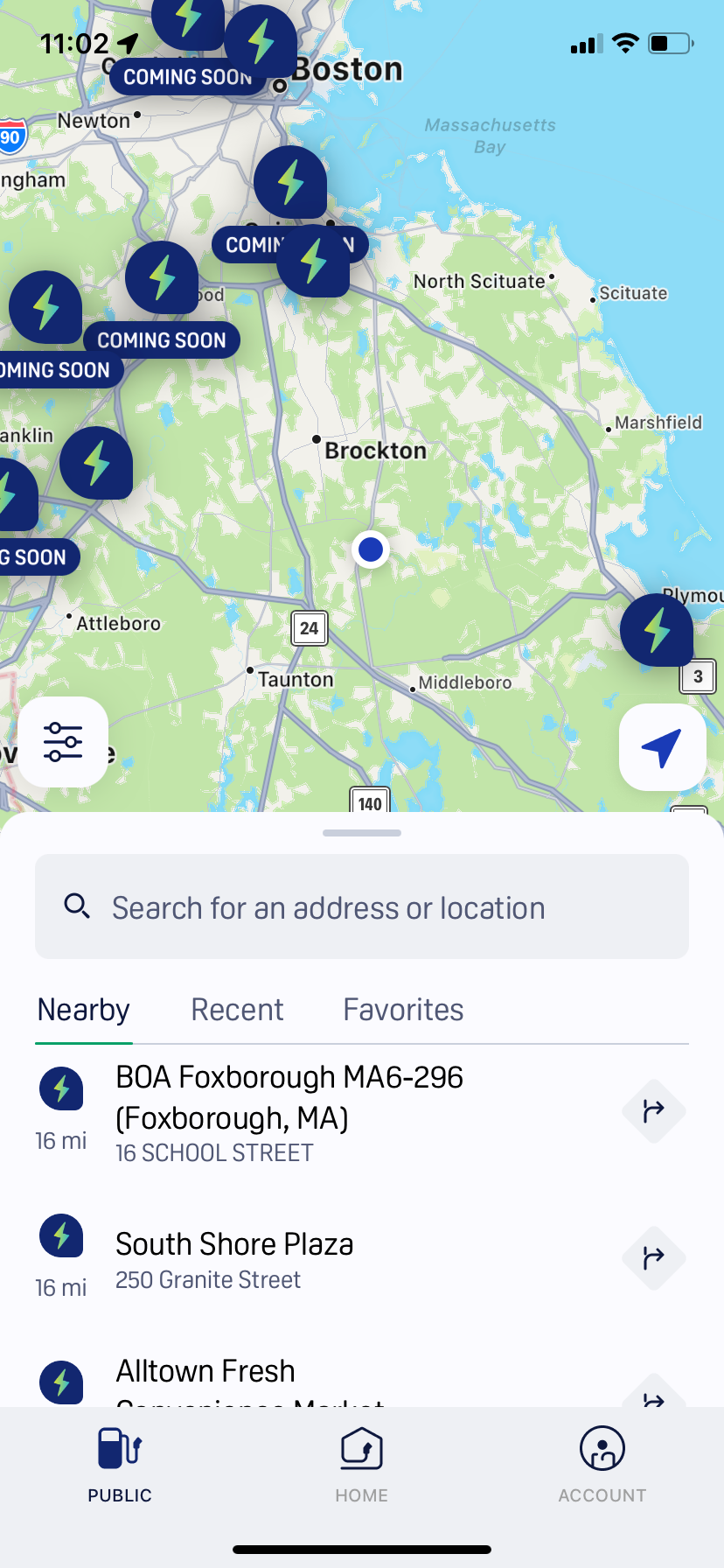
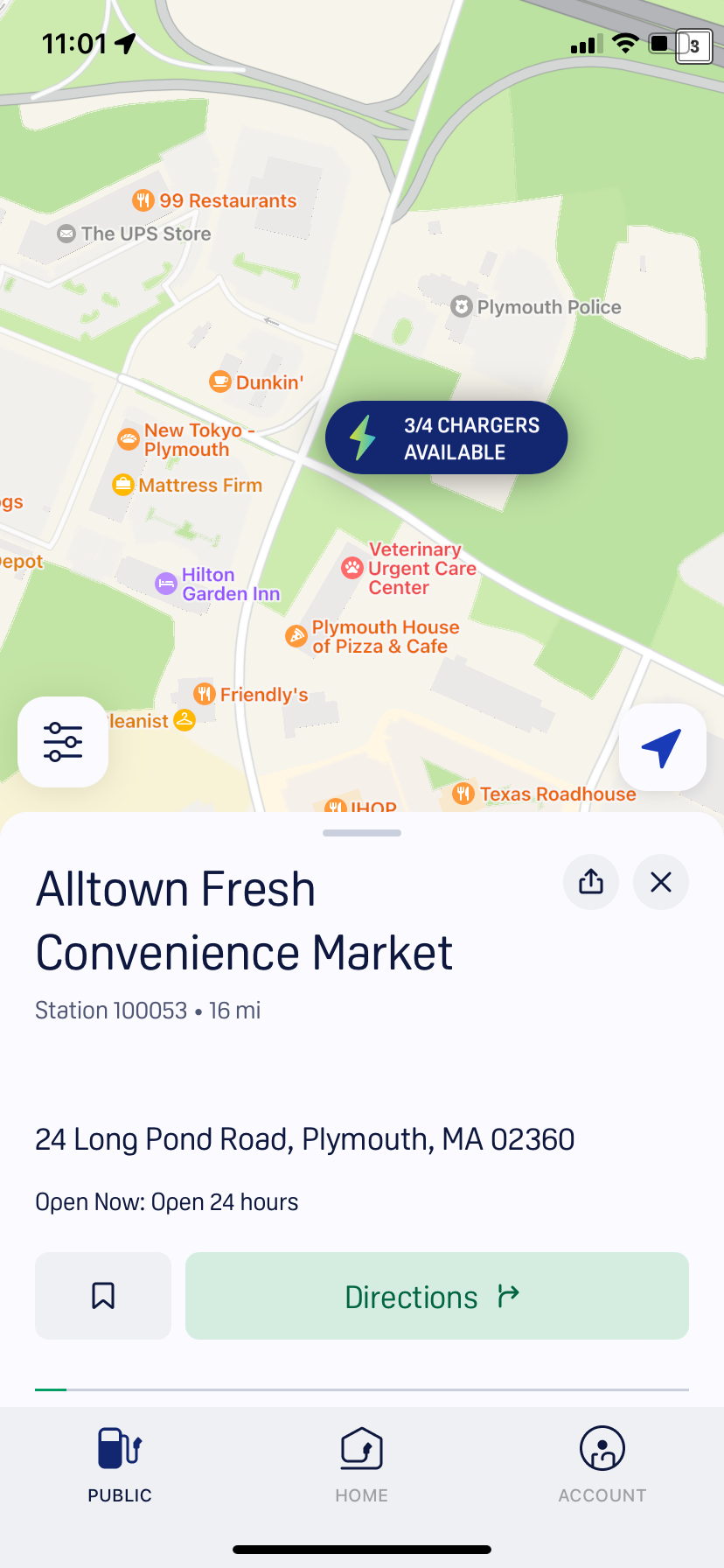
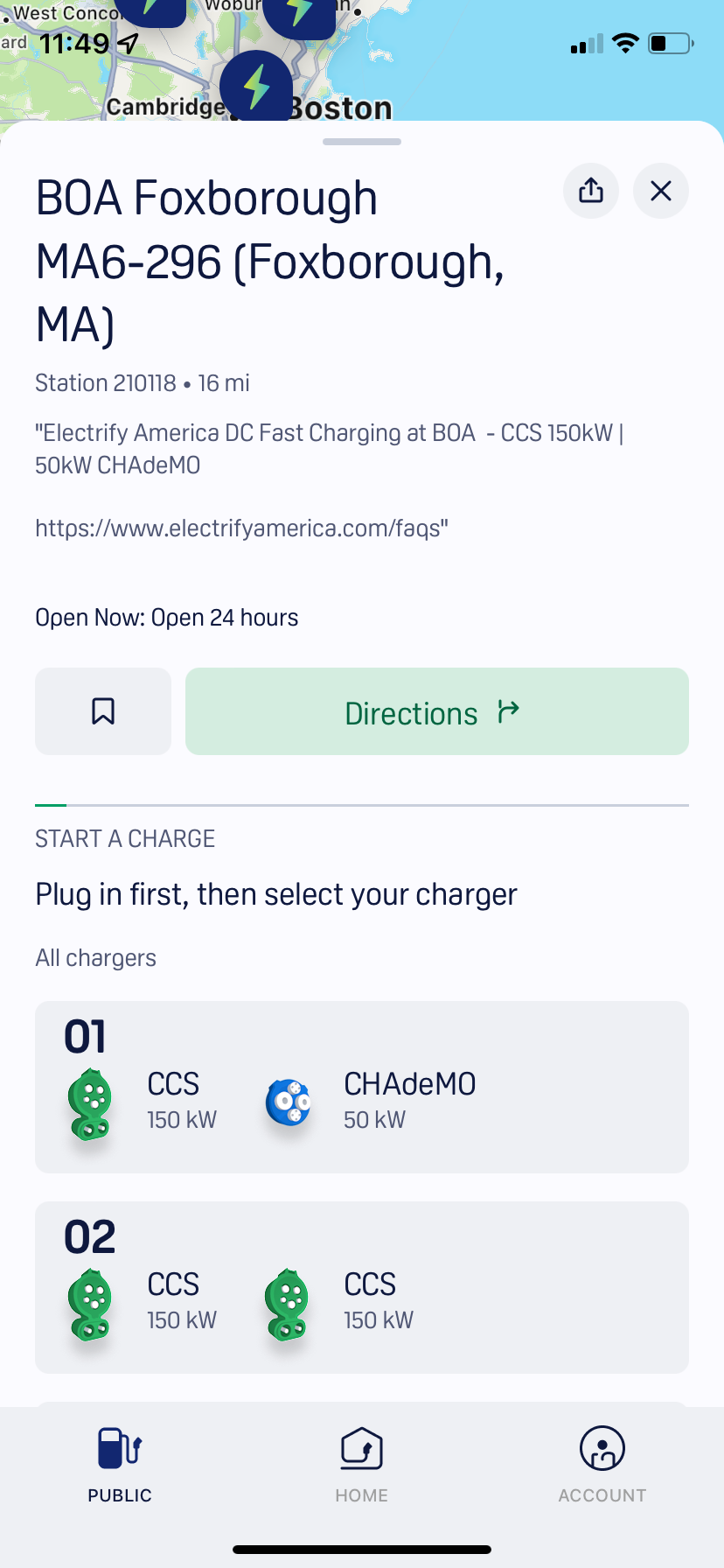
Electrify America also has an option for homeowners called the Electrify HomeStation, available for $649. It can be plugged into your home's 240-volt wall outlet then mounted on the wall or hardwired by a professional. The HomeStation is a level 2 charger, which outputs 9.6 kW of power. You can even check the status of your vehicle's charge on Electrify America's mobile app.
2. How Fast Is Each Charger?
The rate at which your EV charges is incredibly important; charging networks and electric vehicle owners alike want it to be as quick as refueling a gas-powered vehicle. Though this isn't quite possible yet, companies are trying their hardest to make it a reality.
Tesla, for example, has Superchargers capable of 150kW up to 300kW with its new V3 Superchargers, though most are still capped at 250kW.
What does this mean in reality?
Well, it depends on your Tesla model, as each supports a different level of charging. For example, the new Model 3 supports charging speeds of around 250kW, while the Model S and X can charge at up to 225kW. The Tesla app can even tell you the charging output for each stall at a Supercharger station.
To make it as simple as possible for all Tesla owners, Tesla summarizes that its Superchargers can add up to 200 miles in around 15 minutes. Tesla also makes it as easy as possible to pay; simply add your preferred payment method to your Tesla app, charge your vehicle, then you're billed per kWh when you drive away.
Tesla also offers a Wall Connector for at-home charging, which adds around 44 miles of range per hour. It's available for $550, and U.S customers can use a 30% Federal tax credit to save some money.
Electrify America offers chargers from 50kW, used mostly by EVs with CHAdeMO charge ports, 150kW for EVs with CCS charge ports, as well as 350kW, which is even faster than Tesla Superchargers; however, you'll need a car with compatible fast charging to take advantage of it. Electrify America's app does a great job at allowing you to filter the minimum charging speed, as well as displaying the price per kWh or per minute at each stall.
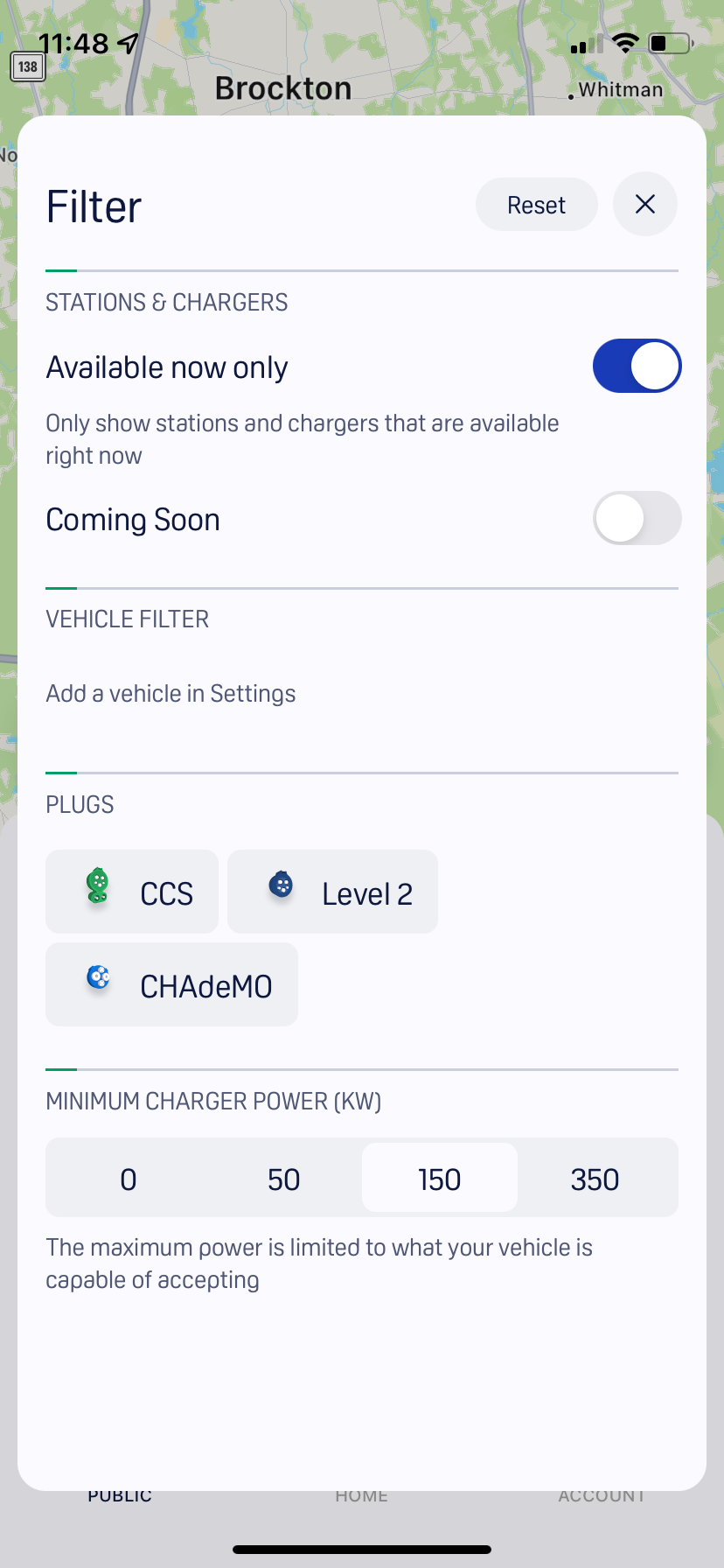
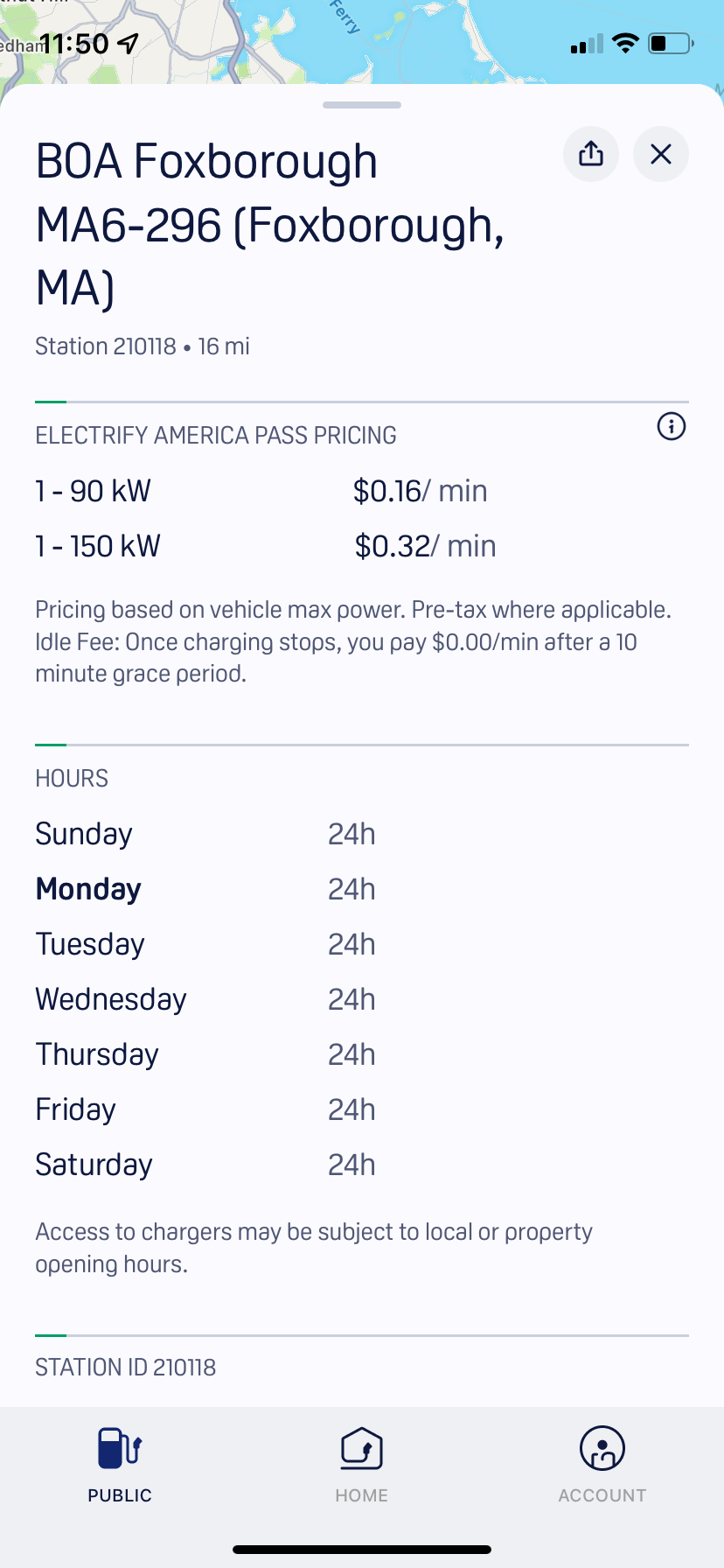
The most common Electrify America chargers support up to 150kW. Electrify America states that the 150kW chargers can "add about 7.5 miles of battery range per minute for capable vehicles," while 350kW chargers, the fastest public chargers available right now, "can add an estimated 23 miles of battery range per minute for capable vehicles."
3. Charging Prices
The best part about owning an electric vehicle is that you'll never have to touch a dirty gas pump ever again. Charging your EV will be cheaper than gasoline, and you won't have to worry about the price of gas skyrocketing due to political factors. However, just like gasoline, the price of electricity can range as well.
Tesla's Superchargers typically bill you by kWh, which averages around $0.25 per kWh. Depending on your model and battery size, it should cost around $25 to charge your Tesla completely. If you're at a Supercharger station that charges you per minute, which is less common, it can charge you around $0.84 to $1.34 per minute, which can add up fairly quickly.
At the time of writing, 150kW Electrify America charging stations charge you $0.43 per kWh. If Electrify America chargers are more readily available in your area, you can opt to subscribe to Electrify America's Pass+ membership for $4 per month, giving you the discounted rate of $0.31 per kWh.
Electrify America also has some chargers that charge customers per minute. Its rate for 150kW charging is $0.32 per minute or $0.24 per minute for Pass+ members.
Which Charging Network Is Right for You?
There are plenty of amazing electric vehicles for sale right now that aren't Teslas. If you go for something that isn't a Tesla, you'll have to rely on an Electrify America charger, ChargePoint, or another charging network that supports your vehicle's charging port.
At times, it's not simply the number of chargers or how fast a charger is that matters, but how reliable the network is as a whole. Often, you'll see reviews of Electrify America's charging stations being out of order but showing as available on the map. This can result in an incredibly frustrating experience if you need to charge your vehicle quickly.
The upside of Tesla's Supercharger network is they're reliable. You'll get accurate readings on the Tesla app of which stalls are available and the charging speeds, and you'll be confident that you can quickly charge your vehicle when you arrive, with no issues regarding payments or surprise out-of-order charging stalls.
It may not be a factor of which network is better, but which one is right for you. Choose the EV that's a perfect fit for you, then figure out how to charge later. You'll enjoy your new electric vehicle nonetheless and never look back.

